How to solve the forbidden access issue? I'm accessing my service through web reference so there are no declarations on my codes. Is there any set-up I have to include to make the certificate valid during connection?
My Web Service was setup using IIS binding and inbound and outbound in firewall. For creating certificate, I followed this link for creating temporary client certificate .
This is my webconfig
<?xml version="1.0"?>
<configuration>
<connectionStrings>
<add name="constring" providerName="System.Data.SqlClient" connectionString="Data Source = ip;Initial Catalog = db; User ID = user; Password = pass"/>
</connectionStrings>
<appSettings>
<add key="aspnet:UseTaskFriendlySynchronizationContext" value="true"/>
</appSettings>
<system.web>
<compilation debug="true" targetFramework="4.5" />
</system.web>
<system.serviceModel>
<client>
<endpoint behaviorConfiguration="ClientCertificateBehavior"
binding="basicHttpBinding"
bindingConfiguration="SecureHttpsBinding" contract="IMetadataExchange"
name="https" />
</client>
<bindings>
<basicHttpBinding>
<binding maxReceivedMessageSize="10485760" name="SecureHttpsBinding">
<readerQuotas maxStringContentLength="10485760"></readerQuotas>
<security mode="Transport">
<transport clientCredentialType="Certificate"></transport>
</security>
</binding>
</basicHttpBinding>
</bindings>
<services>
<service name="RBOSService.AccountService" behaviorConfiguration="ServiceBehavior">
<endpoint address="" contract="RBOSService.IAccountService" binding="basicHttpBinding" bindingConfiguration="SecureHttpsBinding"/>
</service>
<service name="RBOSService.OrderService" behaviorConfiguration="ServiceBehavior">
<endpoint address="" contract="RBOSService.IOrderService" binding="basicHttpBinding" bindingConfiguration="SecureHttpsBinding"/>
</service>
</services>
<behaviors>
<endpointBehaviors>
<behavior name="ClientCertificateBehavior">
<clientCredentials>
<clientCertificate findValue="CN=tempClientcertCN"
storeLocation="LocalMachine"
storeName="My"
x509FindType="FindBySubjectDistinguishedName" />
</clientCredentials>
</behavior>
</endpointBehaviors>
<serviceBehaviors>
<behavior name="ServiceBehavior">
<!-- To avoid disclosing metadata information, set the value below to false and remove the metadata endpoint above before deployment -->
<serviceMetadata httpGetEnabled="true" httpsGetEnabled="true" />
<!-- To receive exception details in faults for debugging purposes, set the value below to true. Set to false before deployment to avoid disclosing exception information -->
<serviceDebug includeExceptionDetailInFaults="true"/>
</behavior>
</serviceBehaviors>
</behaviors>
<serviceHostingEnvironment aspNetCompatibilityEnabled="true"
multipleSiteBindingsEnabled="true" />
</system.serviceModel>
<system.webServer>
<modules runAllManagedModulesForAllRequests="true"/>
</system.webServer>
</configuration>
I also added this code for trustIssue inside OnCreate()
System.Net.ServicePointManager.ServerCertificateValidationCallback += (o, certificate, chain, errors) => true;
and after requesting webService, I got an exception regarding forbidden.
userAccount = requestAccessService.sendRequestAccess(userRequest, ref response);
This is the full exception message
{System.Net.WebException: The request failed with HTTP status 403: Forbidden
at System.Web.Services.Protocols.SoapHttpClientProtocol.ReceiveResponse (System.Net.WebResponse response, System.Web.Services.Protocols.SoapClientMessage message, System.Web.Services.Protocols.SoapExtension[] extensions) [0x00054] in <6f1079230fce4308ba6b44c62385411f>:0
at System.Web.Services.Protocols.SoapHttpClientProtocol.Invoke (System.String method_name, System.Object[] parameters) [0x000ad] in <6f1079230fce4308ba6b44c62385411f>:0
at BusinessLogic.RequestAccessWebService.RequestAccessService.sendRequestAccess (BusinessLogic.RequestAccessWebService.UserRequestBO userRequest, System.String& response) [0x00001] in D:\files\jeys\H2 software\GitLab\RBOS_Release_1\RBOS Mobile\RBOS 2.0.4 - base - Merged 0620\BusinessLogic\Web References\RequestAccessWebService\Reference.cs:123
at (wrapper remoting-invoke-with-check) BusinessLogic.RequestAccessWebService.RequestAccessService:sendRequestAccess (BusinessLogic.RequestAccessWebService.UserRequestBO,string&)
at RBOS_2._0._1.RequestAccess.backgroundService (System.Object sender, System.ComponentModel.DoWorkEventArgs ev) [0x00131] in D:\files\jeys\H2 software\GitLab\RBOS_Release_1\RBOS Mobile\RBOS 2.0.4 - base - Merged 0620\RBOS 2.0.1\Activities\RequestAccess.cs:184 }
If there are any questions, feel free to comment. Thanks for help.
